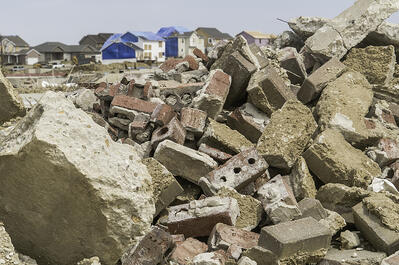 How do you plan for the unimaginable?
How do you plan for the unimaginable?
An active intruder or shooter enters a school, manufacturing facility, or public safety building.
A tornado, flood, or other weather emergency rips through your town, creating havoc.
All of these horrific events require a combination of planning and the right technology to make sure that facilities are safe.
How do you ensure that every essential worker knows exactly what they need to know when they need to know it in order to respond?
Seeking Alignment and Integration
First of all, what you don’t want is an outdated or siloed system that slows the response to an emergency or operational threat.
What customers are looking for are systems such as Motorola’s Safety Reimagined. It is an entire integrated emergency communications system managed by a reliable service provider. It is quickly becoming the go‑to solution for hospitals, schools, manufacturing facilities, and other entities that might face threats.
A cloud‑based software solution called Orchestrate ties together disparate elements, including mission‑critical communications, video security and access control, and command center software.
All Hands on Deck
Let’s use a hypothetical example of a security breach at a school. It’s happening far too often these days.
The first thing that happens is a security camera notes when a potential threat breaches the perimeter. They need to be stopped before walking through the door.
If you have an emergency communications system that alerts people that someone is at the front door or going to a restricted area, that triggers a workflow. It triggers an alarm, which goes to mission‑critical personnel via two‑way radio. Simultaneously, a text message goes out to multiple people’s phones, tablets, and radios.
All of the people who need to get informed get the information when they need it. That’s the benefit of having the appropriate technology to implement it.
Orchestrate works to
- Detect threats
- Analyze and evaluate dangerous situations
- Communicate by connecting workgroups that need to respond
- Respond and document issues
Of course, even the most state‑of‑the‑art technology won’t protect your facility unless you have a workflow and process in place for emergencies.
Drills Matter
Does your organization have a security plan? Do you practice with security drills?
Many of the breakdowns or security failures we see are not necessarily related to technology. They happen when a facility has a camera but no one is monitoring it at a critical time. Who enforces the workflow and response in case of a tornado or other weather emergency? Does everyone know what they are supposed to do, and where they are supposed to shelter?
It’s important to practice for the worst‑case scenarios so everyone can keep a cool head. Emergencies are scary, and our brains don’t function in the same way when we are in “fight or flight” mode.
You want to make the best of the technology you have in place by planning ahead for the inevitable chaos that is part of every emergency.
Police departments and fire departments are used to drills. And our schoolchildren are getting practice, too. But not every industry is in the habit of conducting emergency drills.
With regular drills, your team’s response becomes second nature by the time you experience an actual threat.
Customized Security
Nobody knows what challenges Mother Nature is going to put in front of us. We certainly have seen a good amount of chaos and destruction recently, and unfortunately, the threats from weather and humans are real and ongoing.
That’s why preparatory drills, reliable technology, and clear communication is essential for keeping everyone safe in case of emergency.
Every school, manufacturing facility or hospital is different, and there are no shortcuts or one‑size‑fits‑all solutions when it comes to security.
If you have questions about your emergency communications system, talk to an experienced two‑way radio service provider about your safety needs.